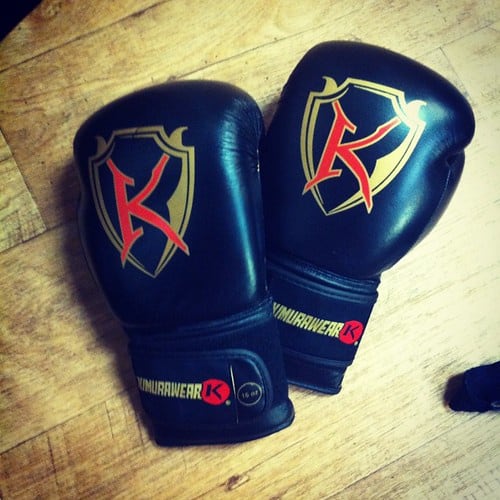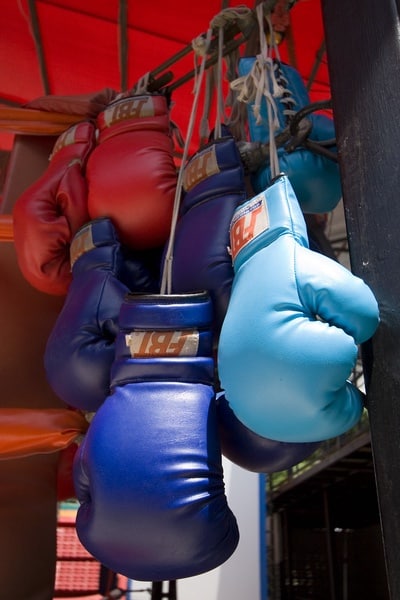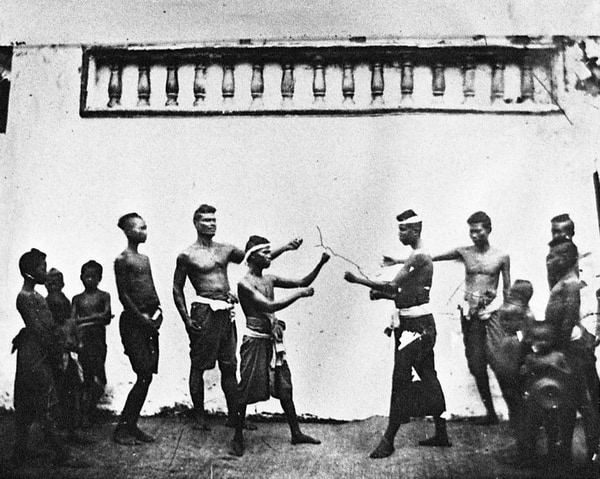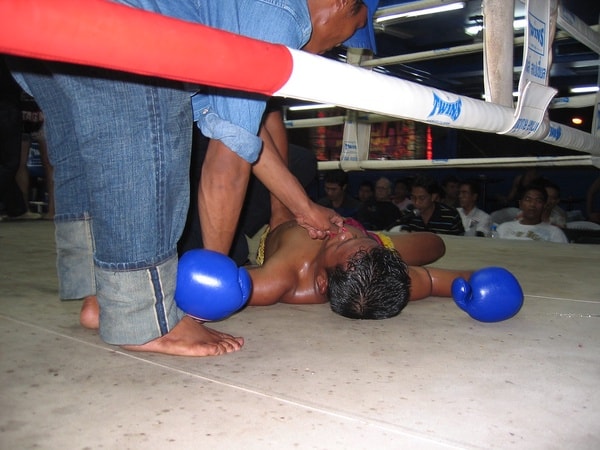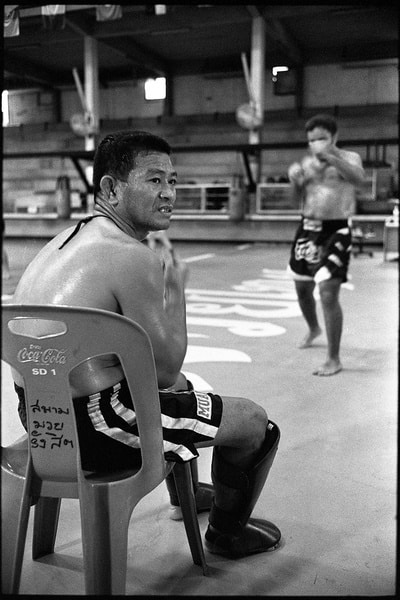Ten Things to Know before Training Muaythai in Thailand
Muaythai (which literally translates as ‘boxing Thai’) is a word that has gradually become more and more familiar to the rest of the world over the last couple of decades.
This would be especially true in the circles of active or adventurous types – usually those with an interest in challenging physical pursuits and sports, alongside the growing numbers of martial arts fans and participants of all levels.
And muaythai (in Thailand) has increasingly become one of the items on many a traveller’s ‘to-do’ lists, with many novices or rank beginners now being willingly accommodated if they fancy giving it a go.
The surge in popularity and notoriety of Thailand’s national sport in recent years is related to a variety of factors, one of which is the massively-popular and now mainstream UFC mixed martial arts (MMA) championships, along with its many competitors and imitators (including Asia’s ONE Championship, which is forging new pathways for muaythai and Asian fighters in general). The majority of MMA competitors will now train in muaythai to hone their stand-up skills.
Muaythai has come into its own in that compared to other stand-up striking arts like boxing or karate, it is largely considered to be the most effective as it covers all ranges and utilises clinches and throws from a stand-up position.
So the traditional picture of (very) small numbers of dedicated, die-hard practitioners slogging to the other side of the world, hammering the training out thanklessly, in something of a martyr-like fashion — to the amusement and befuddlement of the Thais –- has been replaced somewhat.
It is now more common for droves of MMA practitioners to come out to Thailand to get a slice of the ‘authentic muaythai’ pie that they may have heard their favourite fighter talking about.
This doesn’t look to be slowing down anytime soon, and any serious, self-respecting would-be MMA fighter has already probably made the trip to the land of smiles on at least one occasion.
But it is not just about MMA. Most Thais still have little interest in MMA at present, but muaythai itself has now become more industry-like in appeal to the astute of the business-minded Thais; and this is apparent from the massive increase in ‘muaythai gyms’ per se in both the capital and various other regions.
Many of these newer, and perhaps more progressively-thinking business ventures, cover a wide range of experiences, from out-and-out tourist gym (most likely in coastal areas, but still they do exist in Bangkok) to exclusive ‘fighter’ gym. The majority of this type of gym operates in ways most likely unrelated to the actual realities of the sport – at least in terms of rock-bottom, local culture level.
Aside from accommodating increasing numbers of MMA competitors from around the globe, Thailand has made significant further strides in making its national sport more accessible to the rest of the world in its own right, particularly over the last decade.
Traditionally having had no real interest in any involvement with non-Thais or ‘outsiders’, the sport remained in the sole grasp of the die-hard local Lumpinee and Ratchadamnoen crowd (the two main stadiums for muaythai in Thailand), centred heavily around big bets, big money, corruption, drugs, and all manner of other types of crime. This may come as no real surprise to boxing fans the world over who have probably witnessed the way that aspects of the fight game are largely likely to be controlled by segments of the ‘underbelly’ of society.
This aspect of the sport is still very much a reality but is largely only for the eyes of those locally involved in the sport at grass-roots level muaythai. (More on this later.)
But the sport of muaythai itself (or at least a version of it) has been gaining appeal with a wider market of fan and practitioner through avenues such as the ‘Yokkao’ and ‘Thai Fight’ events along with the more local (but globally popular) ‘Maxmuaythai’ and such like.
Not being ones to miss any potential new openings in existing markets, the response from some of the more modern, entrepreneurial and open-minded generations of affluent younger Thais has been the opening of increasing numbers of different types of ‘muaythai’ facility (compared to the traditional backstreet, old-school, spit-and-sawdust-type ‘fighter gyms’ associated with the sport – the only ones that existed originally) catering to a much wider variation of exponents of the sport.
These gyms come in the form of modern, ‘fitness-facility’ affairs that include muaythai classes on their timetable, to modern ‘super gyms’, that utilise (or are owned by) famous fighters for promotional purposes.
There is also the more recent phenomena of the ‘muaythai school’, which runs classes and courses at different levels, usually resulting in some form of certification and ‘graduation’, for both locals and international visitors. There are even ‘mall gyms’ these days, which aim to attract the trendy young Saturday shoppers into a few rounds on the pads.
Many of these facilities offer particular ‘packages’ and it is sometimes a daunting prospect when considering where to train due to the sheer volume and variation of options. The obvious downside to the more commercial aspect of muaythai is a downturn in quality – but how would you know?
So – it can take a little consideration before training muaythai in Thailand, although there is certainly no shortage of options these days, and any one of any level can be accommodated to train these days. It just pays for anyone coming to Thailand to train to make sure they have the right level and situation for their training goals before committing to anything.
With that in mind, and in order to wade through some of the potential things to consider in order to avoid any possible misunderstandings (some rather obvious and some not so much) — here we present you with the ‘Top Ten Things to Know before Training Muaythai in Thailand’ in the hope that all will become much clearer when deciding if or where to train muaythai in Thailand.
1. Thailand is a tropical country
It is no mean feat by anyone’s standards to undertake arduous physical training in a tropical climate.
With temperatures throughout the year in Thailand somewhere between around 28 and 42 degrees, there is likely to be a period of adaptation – even for those already considering themselves to be in good shape.
The climate is one of the reasons why some professionals are likely to stay for 1-6 months in order to get fully conditioned, and so those with little or no experience of training in this kind of heat and humidity should definitely go steady to begin with and thus give the immune system a chance to adapt to the new conditions.
Certainly there will be more dehydration than normal even without training, so making sure to drink enough water and also replenish with electrolytes in necessary.
2. Muaythai is not kickboxing
Even these days, muaythai is still described or considered by some to be the same as kickboxing.
It isn’t. Even though kickboxing is not that easy to define anyway since there now exist so many styles and organisations with different rules and variations – muaythai it is not.
Kickboxing involves only kicks and punches, usually with much more movement and often involving some form of protective equipment other than gloves.
Muaythai is a sport that evolved from a form of martial art for the battlefield with strong cultural connotations, is designed to attack or defend, and is always fought full-contact with the only equipment being gloves and shorts.
3. Some equipment is necessary for training
So although the fighters themselves only wear shorts and gloves for actual fighting, a degree of protective equipment might also be required for practice, especially if any kind of blocking is to be learned or if sparring is likely to be a consideration.
The two main things to know here are that there will probably be some equipment in the gym that you can use (which may not be that new or hygenic, depending on the facility), or you may want to get your own.
There is no shortage of equipment in Thailand, and it is usually high-quality if bought from a proper shop. Many of the gym themselves will have their own gym shop with stocks of equipment that may or may not be reasonably priced compared to other shops, again depending on the gym.
The bare minimum at least will be shorts and boxing gloves, for anyone wishing to practice.
4. Muaythai has strong cultural considerations
Unlike many of the more modern martial arts like kickboxing and MMA, which evolved from other styles, muaythai has a long history with strong cultural implications.
Originally adapted from a style of fighting used in hand-to-hand-combat on battlefields, muaythai became a ring sport only fairly recently from a historical aspect of the art.
This is still apparent in some of the ceremonial rites related to muaythai the ring sport, such as the ‘wai kru’ or ‘ram muay’ movements and dances that are done before the fight commences for a variety of reasons related to Thai lore. These are mainly related to preparing the ring (and oneself) for battle, expelling any evil spirits, and paying respect to the camp being represented in the bought.
5. Commercial gyms and fighter gyms are completely different
Going back to one of the points made earlier – it is most important to get the right gym!
In the old days there existed only one type of gym in Thailand – the hardcore, spit-and-sawdust, fighter variety. This type of facility (even today) exists with questionable hygiene, brutal training regimes, and little to no skill or interest in any other language.
Somewhat bizarrely, these tend to be the places sought ought by many die-hards of the sport – the methods do bring about specific results – but they are most definitely not recommended for first-timers or anyone interested in doing anything other than becoming a fighting machine.
6. Fighter level muaythai is not for the faint-hearted
Yes it sounds romantic – a noble pursuit indeed — heading off to exotic climes to master the local fighting style, beating the natives at their own game and heading home on a wave of heroic glory to pass on skills and knowledge.
This is an increasingly common scenario as younger people look for more interesting ways to escape the hum drum of their own culture or environment, whilst impressing the Instagram crowd at the same time.
But real muaythai, and the conditions that go along with it in reality, are far from romantic or mystical. If you think that may be the way you want to go, be realistic – and leave the rose-coloured spectacles at home on this one.
7. Fighters train for 6 hours per day in Thailand
Yes they do. And if you come here telling the gym that you want to fight you will be expected to do the same. No preferential treatment in this kind of gym – only hard work and even harder-won respect.
Real gyms run 2 sessions per day, usually up to 3 hours long. Any fighters are expected to attend both sessions, 6 days per week. Nothing glamourous about that.
8. The Thais don’t speak English that well
The majority of poorly or even standardly-educated Thais (state high school level only or lower) are not users of the English language for the most part.
Although in some aspects of Thai society the level of English is vastly improving due to overseas travel and education, along with work requirements for decent jobs with links to international companies, the level of English knowledge and usage in Thailand is still somewhat low.
Even in comparison to neighbouring nations such as Vietnam, Thailand ranks as one of the lowest in SE Asia for the use and development of English communication skill. So it’s not a good idea to expect flawless communication in English when visiting Thailand anyway, least of all in a muaythai gym.
9. Not every trainer is a good trainer
Let’s be direct here.
It’s a fact.
The best trainers in Thailand tend to be the much older ones with a lot of fight experience, and an eye for detail and technique. Unfortunately these guys are something of a dying breed, and many of the younger trainers are admittedly not that skilled in terms of either knowing or communicating techniques and foundations of the art.
Most Thais are now looking at this from a business perspective as far as foreigners are concerned, so for the most part they may assume you are a complete novice of both their art and their culture or language.
Don’t make the mistake of thinking that your trainer must be super just because you are in Thailand – this is definitely not always the case and requires a little digging.
10. It takes years of gruelling training to get good at muaythai
Realistically, of course it does, as with anything.
Being realistic about training expectations is the main thing for anyone wanting to train muaythai in Thailand to consider first.
The other aspects are related to fitness, conditioning and durability, along with degree of ability and experience using techniques of attack and defence in relation to movement. And the sheer amount of time spent kicking the bag, training, sparring, conditioning, recovering etc., etc.
It takes time and everyone has to start somewhere – 3 weeks training next to a beach won’t make anyone an expert – but there is much to be gained from some involvement with the sport of muaythai.
This is true for both total novices and those who practice as a hobby or way of keeping fit, to seasoned, practiced fighters at the top of their game — all are now willingly accommodated in Bangkok and Thailand.
Planning a trip to Paris ? Get ready !
These are Amazon’s best-selling travel products that you may need for coming to Paris.
Bookstore
- The best travel book : Rick Steves – Paris 2023 – Learn more here
- Fodor’s Paris 2024 – Learn more here
Travel Gear
- Venture Pal Lightweight Backpack – Learn more here
- Samsonite Winfield 2 28″ Luggage – Learn more here
- Swig Savvy’s Stainless Steel Insulated Water Bottle – Learn more here
Check Amazon’s best-seller list for the most popular travel accessories. We sometimes read this list just to find out what new travel products people are buying.













